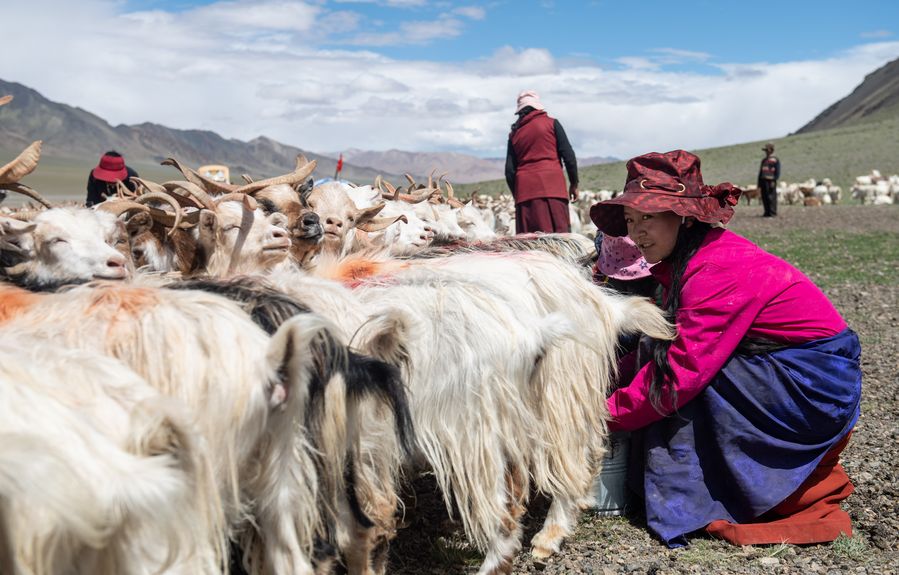
File photo shows Yangzhoen (Front), living at a nursing home for elders, tells a story in Shannan city, southwest China's Tibet Autonomous Region. (Xinhua/Chogo)
Farmer and herder patients in 74 counties and districts, covering about 98.5 percent of Tibet, have enjoyed the policy of post-treatment payment, which ensures their health and gives them more time to apply for financial assistance.
LHASA, Feb. 28 (Xinhua) -- All 63,300 residents registered as having fallen into poverty because of illnesses in southwest China's Tibet Autonomous Region have shaken off poverty, the regional health authorities said.
From 2016 to 2019, the regional government introduced detailed and tailored poverty alleviation measures to cure poverty-stricken residents physically and financially.
The provision of favorable medical insurance and assistance has greatly reduced medical costs for most residents, even exempted the costs for the worst-off residents in agricultural and pastoral areas, said the regional health commission.

A herdswoman from a cooperative milks sheep in Rutog County of Ngari Prefecture, southwest China's Tibet Autonomous Region, Aug. 4, 2019. (Xinhua/Jigme Dorje)
Farmer and herder patients in 74 counties and districts, covering about 98.5 percent of Tibet, have enjoyed the policy of post-treatment payment, which ensures their health and gives them more time to apply for financial assistance. ■



